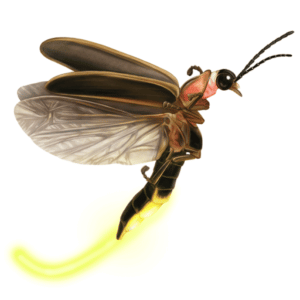Notice: Below is a list of 0 important links included on this page.
Please note that while screen readers have made significant strides, they may still lack full support for optimal web accessibility.

You must be logged in to post a comment.
This is a project of the Xerces Society, working in collaboration with the IUCN SSC Firefly Specialist Group and New Mexico BioPark Society.
Copyright © 2025 The Xerces Society •1631 NE Broadway Street, #821 • Portland OR 97232 USA
Thank you for submitting this firefly observation! The notes about mowing are interesting and helpful. It is hard to know for sure without photos, but the yellow flash color, mowed grass habitat, timing between flashes in the flash pattern, and early evening display time all align with the big dipper firefly (Photinus pyralis). Because the flashes were from individuals perched in the grass, it is a bit harder to use the flash behavior for ID- as the flashes may have been from females rather than male courtship flash patterns, which are what we use for ID.